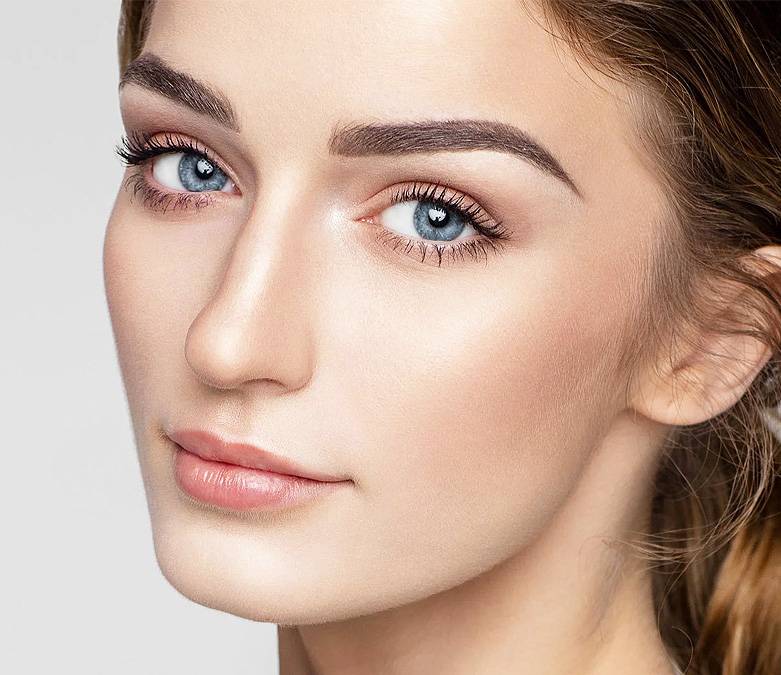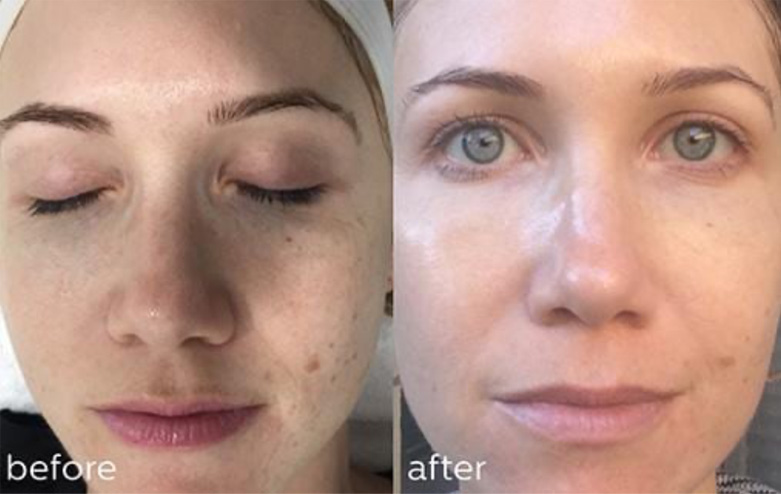Chemical Peel Treatments in Los Angeles

As Seen On












A chemical peel is a procedure used to improve the appearance of the skin.
The peel works on the outer layer of skin, called the epidermis. It can be used to improve the appearance of wrinkles, scars, and blemishes.
PS One of the favorite peels at our Medspa in Los Angeles is the Cosmelan Peel.
What Do Chemical Peels Benefit?
Chemical peels target skin conditions by causing the skin’s surface layers to shed, revealing the softer and smoother layers of skin.
The new, regenerated skin is usually smoother and less wrinkled than the old skin.
A chemical peel is not limited to the face and can be performed on the neck, chest, hands, arms, and shoulders.
Affordable Chemical Peels in Los Angeles With Mirror Mirror Med Spa
Make your skin stay young, look young, and glow all year with us today. Suitable for men and women.

Types of Chemical Peels Available at Los Angeles’s Mirror Mirror Med Spa
1. Cosmelan Peel

Professional depigmenting treatment is designed to reduce dark spots, unify skin tone, and enhance luminosity.
If you experience melasma, hyperpigmentation, freckles, acne scars, or dark spots from sun exposure, a Cosmelan peel may be the perfect solution to restore your skin’s youthful tone and texture.
About Cosmelan Peel
Cosmelan is a depigmenting agent that regulates the overproduction of melanin in order to reduce the appearance of new sunspots.
It both controls and corrects issues related to sunspots by keeping hyperpigmentation under control.
Cosmelan has been proven to show results as soon as two weeks after treatment.
Note About Cosmelan Peel Ingredient
This product also includes Hydroquinone, a dermatologist-recommended ingredient to fade dark spots safely.


The Cosmelan Method consists of 4 phases:
- Phase I: Intensive Depigmentation
- Phase II: Continuous Depigmentation
- Phase III: Pigmentation Regulation
- Phase IV: Reappearance Control
Cosmelan contains an exclusive combination of substances that work to eliminate existing hyperpigmentation, preventing its reappearance, and stopping the appearance of new dark spots.
2. Retinol Peel

Retinol is a base peel that addresses skin conditions like photoaging, cystic acne, wrinkles, acne scarring, and hyperpigmentation.
Benefits of Retinol Peels in our Los Angeles Spa
Retinol Unique exfoliating treatment is an effective way to combat photoaging on levels I and II associated with mild pigmentations.
3. Mesopeel Glycolic
Mesopeel Glycolic is an advanced range of professional chemical peels, a dermo-cosmetic procedure that is highly efficient for controlling and reactivating cell synthesis processes.
It promotes cell regeneration and stimulates glycosaminoglycans synthesis, while increasing the level of hydration of the epidermis and reinforcing the skin’s natural barrier function.
What Mesopeel Glycolic Treats
At our Medspa in Los Angeles, Mesopeel Glycolic is recommended to treat moderate skin aging (enlarged pores, sagging skin, moderate photoaging, and fine lines and wrinkles), dyschromia, and milder forms of acne scarring.
It is usually performed by a dermatologist, plastic surgeon, or esthetician in their office.
Mesopeel Glycolic Recommended Treatment Cycle
Most people will see an improvement in their skin after two or three peels, but for some people, even more treatments may be needed to achieve the desired results.
The interval between treatments will vary depending on the type of peel used and the individual’s skin type.
Generally, however, a total of 6 sessions with a minimum interval of 2 weeks is recommended.

How Much Does A Chemical Peel Cost?
The chemical peels at our Los Angeles medspa can lift, lighten, fill, tighten, smooth, soften, and rejuvenate a patient’s aesthetic features with little to no recovery time involved.
Procedure For A Chemical Peel
Your doctor will clean the skin before the chemical peel is applied. This will remove any oils or dirt on the skin’s surface.
The chemical peel will then be applied by your doctor using a brush, cotton ball, gauze, or sponge.
Chemical Peel Application
It is usually applied to the face, but it can also be used on other parts of the body. The length of time that the peel is left on the skin will depend on the type of peel that is used.
After the peel has been removed, the doctor may apply a soothing cream and a moisturizer.
The chemical peel solution will cause unwanted outer layers of your skin to blister and peel off. This will leave new, healthy skin underneath.
Cosmelan Peel and Other Frequently Asked Questions
Morpheus8 Laser System is an FDA-approved laser system that is designed to improve the appearance of skin. It uses laser energy to penetrate deep into the skin and stimulate the production of new collagen. This can help to reduce the appearance of wrinkles, scars, and other signs of aging.
Chemical peels are a popular cosmetic procedure that can improve the appearance of the skin. But who should get a chemical peel?
People with sun-damaged skin, wrinkles, age spots, or other blemishes may benefit from a chemical peel. Those with acne-prone skin may also want to consider this treatment.
However, it’s important to remember that not everyone is a good candidate for a chemical peel. People with darker skin tones may experience slight discoloration after the treatment. Some people with sensitive skin may find that the peeling process is too harsh for them.
As such, before considering a chemical peel, be sure to talk to us at Mirror Mirror Med Spa. We will look at your individual needs and can help you make an informed decision as to whether this procedure is right for you.
There is no one definitive answer to the question of how often you should get a chemical peel. It depends on your skin type, the strength of the peel, and your individual goals.
Generally speaking, however, superficial (light) peels can be repeated every 6 to 12 months, medium peels may be repeated every 9 to 12 months, and deep peels may be repeated every 18 to 24 months. People with sensitive skin may also need to wait longer between peels than those with tougher skin.
As always, you can consult with a qualified skincare professional at our beauty clinic to get expert advice on how often is right for you.
When you are getting ready for a chemical peel, your doctor will tell you what to do in order to prepare your skin. However, one of the most general things to remember is to avoid sun exposure before and after your peel. This is because the sun can cause skin irritation and make your peel less effective.
In addition, you may need to stop using certain medications and topical products before your peel. This is because they can increase your risk of skin irritation or other complications.
After a chemical peel, it is important to take care of your skin to ensure that you get the most out of your treatment.
Here are some tips for taking care of your skin after a chemical peel:
-Keep your skin hydrated. Drink plenty of water and apply moisturizer regularly.
-Avoid sun exposure. Sun exposure can cause sunburn and increase the risk of skin irritation. Wear sunscreen when you go outside.
-Avoid picking or scratching your skin. This can cause irritation and damage the new skin cells that have formed as a result of the peel.
-Follow your doctor’s instructions carefully.
To ensure you get the best results from a chemical peel, it is important to follow these tips:
First, be sure to avoid sun exposure before and after your peel. Sun exposure can increase the risk of adverse effects, and can also make it difficult for your skin to heal properly.
Second, make sure to moisturize your skin regularly. This will help keep your skin healthy and hydrated.
Finally, avoid touching or picking at your skin. Touching or picking can delay healing and cause scarring.
By following these simple tips, you can ensure that you get the most out of your chemical peel.
Most people can put on makeup again as soon as they feel comfortable doing so. Some people may need to wait a day or two, but that mostly depends on how strong the peel was and how your skin reacts.
In any case, the general consensus seems to be that you should wait for at least 24 hours before applying makeup after a chemical peel. This is because the skin needs time to heal and regenerate after the peel. Applying makeup before this can interfere with the healing process and lead to irritation or other skin problems.
If you have any questions or concerns, it is always best to speak with your dermatologist.
As the old skin goes away to may way for the new, you will see some peeling. This is a common side effect of chemical peels. Most people will experience some level of peeling for 2 – 3 days after their peel. Peeling is mostly some light flaking, which can cause the old skin to come off in small amounts per time.
The peeling should stop within 4 days, but it may take longer for some people. If your peel is more, you may need up to 1 week for the skin to completely rejuvenate.
During this time, it is important to keep the skin moisturized and protected from the sun.
To conceal the peeling, use moisturizer liberally several times a day.
While there are minor effects (such as redness and irritation for a while) associated with the peel, it is generally considered safe and effective.
The chemical peel cosmetic procedure is also quite effective at improving the appearance of skin blemishes, age spots, and wrinkles, so it is well worth the expense.
The types of chemical peels mentioned earlier are further classified into three subtypes of chemical peels: light, medium, and deep.
Light Chemical Peel
A light chemical peel is a minimally invasive procedure used to improve the appearance of the skin.
The peel uses a mild acid to remove the top layer of skin, which reveals newer, healthier skin underneath. This can improve the appearance of wrinkles, scars, and pigmentation.
Medium Chemical Peel
A medium chemical peel is a procedure that uses a stronger solution than a light peel but is not as strong as a deep peel.
It is used to treat sun damage, age spots, wrinkles, and mild scarring.
The medium chemical peel removes the top layer of skin and stimulates the production of new collagen. It also tightens the skin and reduces the appearance of pores.
Deep Chemical Peel
A deep chemical peel is a type of chemical peel that uses a higher concentration of acid than a light or medium chemical peel.
The acid is applied to the skin to remove the top layer of skin cells. This can improve the appearance of scars, age spots, and wrinkles.
A deep chemical peel may also be used to improve the appearance of sun-damaged skin.
The type and depth of the peel will determine how much of an immediate effect is felt by the skin. A light peel will remove the outer layer of skin, while a deep peel may penetrate to the lower layers.
So, the recovery process varies depending on the type of peel and the depth of the peel. A light peel may only require a few days of downtime, while a deep peel can take weeks or even months.

